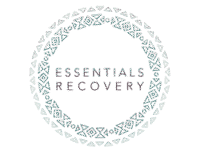Relapse is often a natural part of the recovery process, but it does not have to be an inevitable outcome. The journey toward long-term sobriety involves not only achieving abstinence but also developing strategies to maintain it. Relapse prevention plans are essential tools that empower individuals to recognize triggers, manage cravings, and respond effectively to high-risk situations. By creating a structured plan, people in recovery can build resilience, maintain motivation, and sustain lasting behavioral change.
Understanding the Purpose of Relapse Prevention Plans
A relapse prevention plan is a personalized strategy designed to identify potential challenges and provide actionable steps to avoid returning to substance use. The goal is not only to prevent relapse but also to equip individuals with the skills, resources, and mindset needed to navigate the complexities of daily life in recovery.
Relapse prevention plans serve multiple purposes. They increase self-awareness by helping individuals recognize emotional, environmental, and behavioral triggers. They provide structured guidance for managing cravings and high-risk situations. They also reinforce accountability by establishing clear strategies and support systems that help individuals remain committed to their recovery goals.
Identifying Triggers and High-Risk Situations
The first step in creating an effective relapse prevention plan is identifying triggers and high-risk situations. Triggers are stimuli—internal or external—that evoke cravings or thoughts of substance use. They can include stress, social pressures, certain environments, or specific emotions such as loneliness, anger, or sadness.
High-risk situations may involve interactions with certain people, exposure to substance-related cues, or stressful events that challenge an individual’s coping skills. By identifying these triggers, individuals can develop strategies to avoid or manage them proactively. Awareness of potential risks allows for preparation, reducing the likelihood of impulsive decisions and unplanned relapse.
Developing Coping Strategies
Once triggers are identified, the next step is developing coping strategies to manage them. Coping strategies are practical actions or mental exercises that help individuals respond effectively to cravings or high-risk situations. These strategies may include deep breathing, mindfulness exercises, physical activity, or engaging in hobbies that provide healthy distraction.
Cognitive techniques, such as reframing negative thoughts or practicing self-affirmation, are also important. By developing a toolkit of coping strategies, individuals can respond to challenges with confidence rather than relying on substances. The key is consistency and practice, so these strategies become automatic responses when triggers arise.
Building a Support System
An effective relapse prevention plan incorporates a strong support system. Support can come from family, friends, mentors, therapists, or peer groups who understand the recovery journey and can provide guidance, encouragement, and accountability.
Support systems offer multiple benefits. They provide someone to talk to during moments of vulnerability, help individuals remain accountable to their recovery goals, and offer perspective and encouragement when challenges feel overwhelming. By involving supportive people in the relapse prevention plan, individuals reinforce their commitment to sobriety and reduce feelings of isolation.
Establishing Clear Goals and Boundaries
Relapse prevention plans are most effective when they include clear, achievable goals. These goals serve as benchmarks for progress and provide motivation to maintain recovery efforts. Goals should be specific, measurable, and aligned with the individual’s values and long-term aspirations.
In addition to goals, boundaries are essential for protecting recovery. Boundaries may include avoiding environments or people associated with past substance use, setting limits on social interactions, or creating structured routines that minimize exposure to triggers. Clear goals and boundaries create a framework that supports consistent, healthy choices.
Practicing Mindfulness and Self-Awareness
Mindfulness and self-awareness are powerful tools in relapse prevention. By cultivating awareness of thoughts, emotions, and physical sensations, individuals can recognize early warning signs of relapse and respond proactively. Mindfulness practices, such as meditation, journaling, or guided reflection, help individuals remain grounded in the present moment and reduce impulsive reactions to cravings or stress.
Self-awareness also involves understanding personal patterns of behavior, emotional triggers, and vulnerability points. Individuals who recognize these patterns are better equipped to anticipate challenges and implement coping strategies before situations escalate.
Utilizing Professional Guidance
Professional support is a key component of relapse prevention. Therapists, counselors, and addiction specialists can provide structured interventions, evidence-based strategies, and individualized guidance. Professional guidance ensures that relapse prevention plans address all aspects of recovery, including emotional, behavioral, and environmental factors.
Therapists can also help individuals develop advanced coping strategies, improve problem-solving skills, and work through underlying issues such as trauma, anxiety, or depression. Integrating professional support into a relapse prevention plan enhances its effectiveness and provides an additional layer of accountability and encouragement.
Creating a Written Relapse Prevention Plan
Documenting a relapse prevention plan is a practical way to organize strategies, resources, and goals. A written plan can include a list of personal triggers, coping strategies, support contacts, and step-by-step actions to take in high-risk situations.
Having a tangible reference allows individuals to review and update the plan regularly, reinforcing commitment and providing a sense of structure. A written plan also serves as a reminder of personal goals and progress, which can be particularly helpful during moments of doubt or temptation.
Preparing for Setbacks
Relapse prevention plans should also account for potential setbacks. Recovery is a process, and lapses may occur. Planning for setbacks involves recognizing that occasional challenges do not signify failure, and developing strategies to respond constructively.
Contingency plans may include contacting a support person, attending an extra therapy session, or revisiting coping strategies. By preparing for setbacks, individuals reduce feelings of shame and guilt and maintain momentum in their recovery journey. The emphasis is on learning from challenges rather than allowing them to derail progress.
Incorporating Healthy Lifestyle Practices
A holistic approach to relapse prevention includes maintaining physical, emotional, and mental health. Healthy lifestyle practices, such as regular exercise, balanced nutrition, sufficient sleep, and stress management techniques, support overall well-being and reduce vulnerability to relapse.
Engaging in meaningful activities, hobbies, or creative pursuits also strengthens recovery by providing purpose, joy, and fulfillment. These practices enhance resilience, improve mood, and create positive routines that reinforce a substance-free lifestyle.
Monitoring Progress and Adjusting the Plan
An effective relapse prevention plan is dynamic and adaptable. Regularly monitoring progress allows individuals to evaluate the effectiveness of strategies, identify emerging triggers, and make necessary adjustments. Self-reflection, journaling, or periodic check-ins with a therapist or support group can provide valuable insight into what is working and what needs improvement.
Adapting the plan over time ensures that it remains relevant and responsive to changing circumstances, strengthening the individual’s ability to maintain sobriety in the long term.
Conclusion: Sustaining Recovery Through Strategic Planning
Relapse prevention plans are essential tools for maintaining long-term recovery. By identifying triggers, developing coping strategies, establishing support systems, and creating structured goals and boundaries, individuals equip themselves to navigate challenges and sustain sobriety.
The process of creating a relapse prevention plan fosters self-awareness, resilience, and personal responsibility, empowering individuals to take control of their recovery journey. With proactive planning, professional guidance, and community support, individuals can face high-risk situations with confidence and reduce the likelihood of relapse.
Sustaining recovery is an ongoing effort, and a well-designed relapse prevention plan provides the framework and resources necessary for long-term success. By combining practical strategies, emotional support, and healthy lifestyle practices, individuals can maintain their sobriety, embrace personal growth, and build a fulfilling, substance-free life. Call us today at 855-509-1697.



